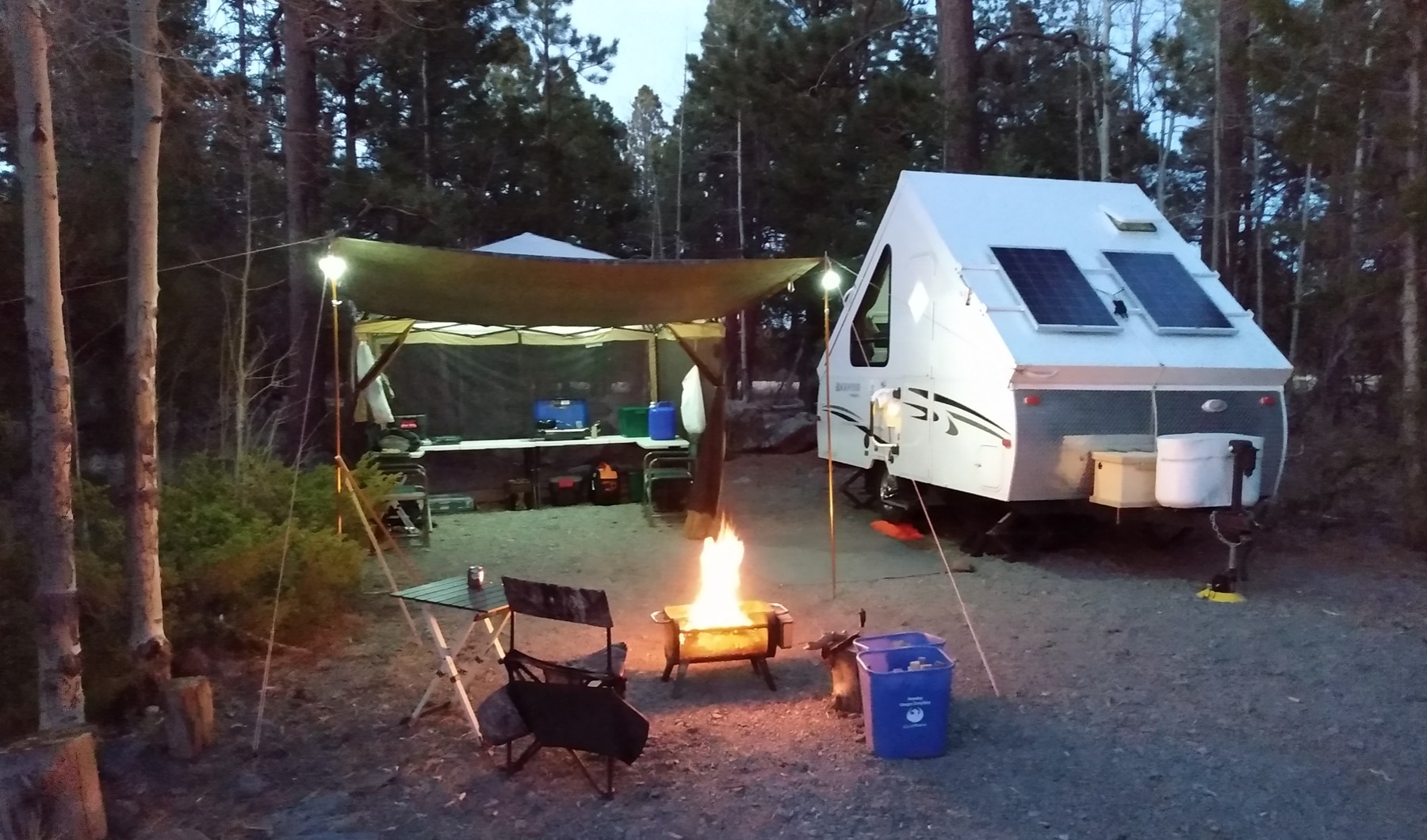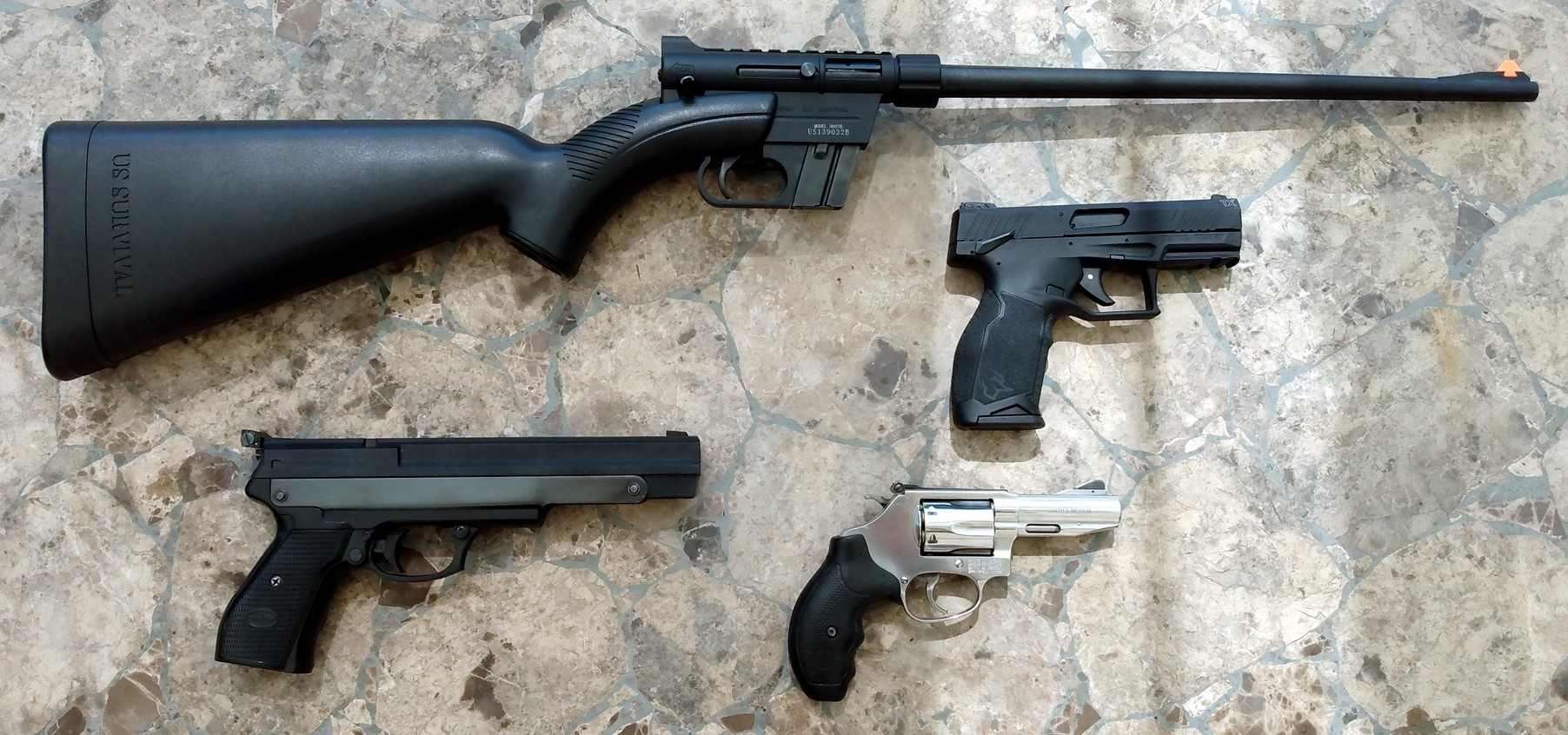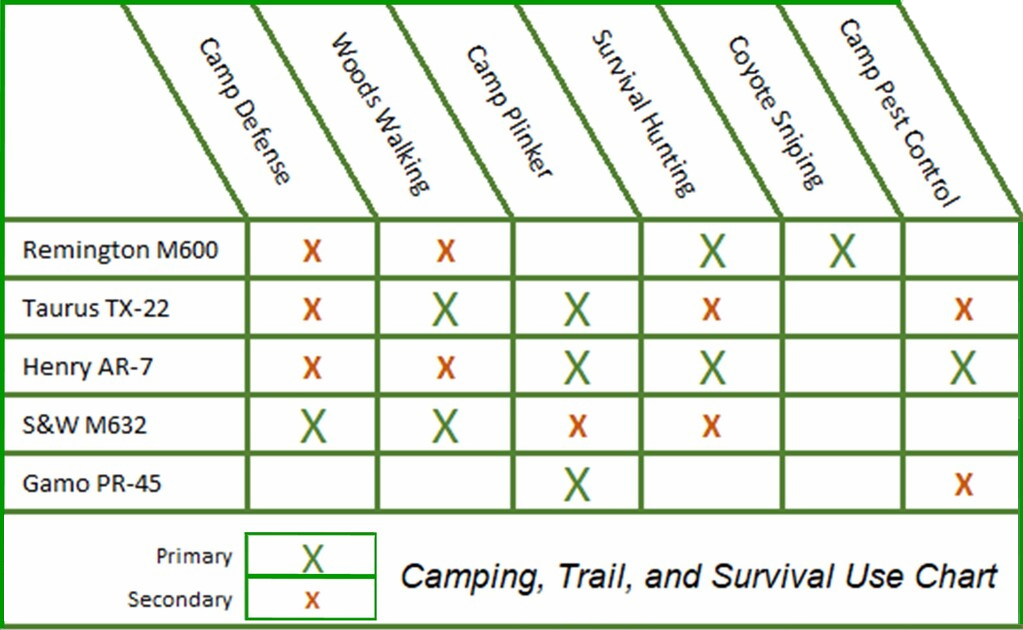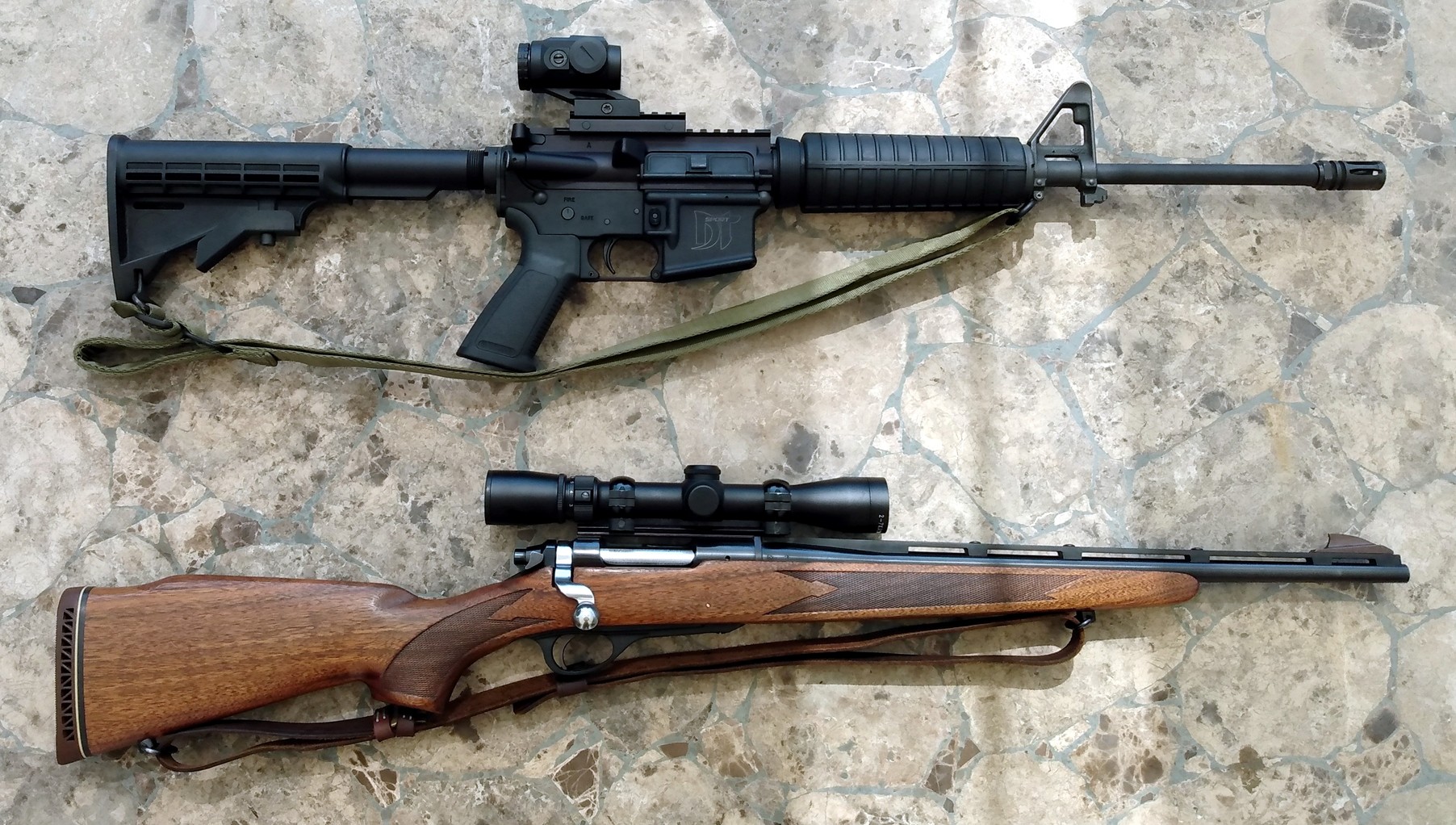
| Articles | Documents | Equipment | Events | Links | Membership | Miscellaneous | Scrapbook | Targets | What's New |
| My Top 5 Camping and Trail Guns | June 2021 | |||
| Dan Martinez | ||||
|
Well, that sounded interesting. I had just gotten back from a boondock camping trip
myself, where, before I went, I spent some time deciding which guns I wanted to take
along on the trip with me. As a matter of fact, I think I did take five guns with me.
But first, let’s talk about his recommendations.
After every gun choice was announced in turn, I made the “you lose” raspberry
buzzer sound at the screen. I have written about trail and camp gun
picks before, and have criticized picks like those above, most recently two
years ago, in my June 2019 story, “
.22 Trail Gun Shootout – Auto vs. Revolver”.
I do a lot of backcountry, or “dispersed,” or “boondock” camping myself. I
head out to camp, often alone, just because I enjoy the self-reliance art and
practice of camping itself. This topic of camping and trail guns is of strong
interest to me. So naturally, it got me thinking about what MY top 5 picks
would be “for camping, trail, and survival in the backcountry.” But before I
get into what my choices would be, allow me to discuss why I almost completely
reject ALL of the video-maker’s picks.
First of all, one must answer the question of why you are bringing along guns
on a backcountry campout in the first place. Every one of his picks seem to
be about protecting yourself from attack, either from human miscreants, or
wild apex predators. While that is certainly a valid concern, the likelihood
of such an event occurring to you is statistically almost zero when you are
camping in the backcountry, at least here in Arizona.
If for “survival”, how did you get into the situation of needing to “survive”
in the first place? How is a (typically no-sight, or tiny-sights) .357
snubnose revolver going to help you gather meat for the pot? Granted some of
the other choices will work a bit better for Survival Hunting, but one of the
best choices for that purpose, a .22 rifle, shows up nowhere on his list.
If for “the trail”, the three large-format guns, the Shockwave, the Glock
pseudo-SBR, and the AR-15 pistol would soon get heavy and/or in the way, due
to their size and bulk. Even the 10mm 1911 would start to weigh heavy on your
belt after a mile or two of hiking. Presumably, when you are Woods Walking,
your focus is on a lovely stroll in the desert or woods, not in finding
something to shoot. For that reason, your firearm should be as unobtrusive
as possible. The snub-nose .357 meets that criterion but is far from the best
gun to have on you if you should spot a critter that might be fun to dispatch
at outdoors distances.
The bigger guns might make a little more sense if your mode of trail travel
involves an ATV, then I might get behind picks like those. The AR-15 pistol
would be the best pick here, for it would allow you to move up to Coyote
Sniping opportunities, instead of just chipmunk-on-a-log Camp Pest Control
opportunities.
And finally, what about for the camp? There are two possible scenarios that
I can think of, for a “camp gun”. The first is a gun to have on you, ready
at hand, at all times, should human or animal predators show up uninvited
while you are just hanging around camp, tending to your camp chores. The
Camp Defense gun should be on your person, at all times. Though you might
have greater firepower stashed away inside the camper, what if the threat
should pop-up unexpectedly between you and that greater firepower? If you
are not bearing arms on your person, you are zucked. Of his choices, that
.357 snub nose makes the most sense for that always-worn camp gun.
The second reason for a camp gun, and what will probably result in the most
trigger pulls on a backcountry camping excursion, is for just sitting around
camp, plinking at cans, pine cones, or whatever. This is just for the sheer
pleasure of shooting and whiling away the time at camp. All of his picks are
too large in caliber, obnoxiously loud, and expensive to shoot for this purpose.
My recent camping trip was to the White Mountains for a turkey hunt and for
some trout fishing. I couldn’t find the turkeys since they weren’t talking,
but the trout were eager to take my bait which meant that I didn’t have to
spend a lot of time on the lake. This gave me plenty of time to just hang
around camp.
So what were the five guns that I took along on my trip? They were:
Beyond these, the “firearm” that I used the most during the trip was my .177
caliber, single-stroke pneumatic Gamo PR-45 air pistol.
I’m going to start by talking about my “core four” guns for camp, trail, and
survival. To do that, and to help collect my thoughts, I created a “Use Chart”
to help define what the primary and secondary uses for each gun would be on a
backcountry camping trip. Since my core four does not include the Remington,
I’ll skip over that one too for right now, but I will “circle back” to it.
Starting with the Taurus TX-22,
you have a lightweight, 16 shot, defensive handgun format, .22 pistol. The
holster I have for it includes a pouch for a second magazine, giving you a
full 32 or 33 shots that you can have on your hip at all times and hardly
even notice it. It nicely fills five of the six uses that I have identified
for camp, trail, and survival purposes.
Now let’s move on to the Henry AR-7. It
also fulfills five of the six uses. It is capable of carrying three 8-round
magazines, giving you a total of 24 shots at the ready. The primary and
secondary uses are distributed a little differently than the Taurus, primarily
due to the differences in physical format.
For Woods Walking, the Taurus gets a Primary X because it is holsterable. The
Henry gets a Secondary X for this purpose because you have to carry it in-hand.
You can also stash it broken down in your daypack, though it will then take some
time to get it out and put it together if you need to shoot.
However, your hit probability is higher with a rifle than with a pistol, so the
Henry is better for Survival Hunting. That is also the reason that the Henry
rates higher for Camp Pest Control. What camp pests? Primarily mice and chipmunks.
The Taurus surprised me with its accuracy though, so it should not be discounted
for these purposes.
Both guns get a little X for Camp Defense due to their caliber, but actually, they
are better than that. Both are autoloaders, capable of unleashing a lot of rounds
in a short amount of time. These guns in .22 LR should not be underestimated in
this role. Not only that, but the Taurus looks like a full-bore service pistol in
the holster. Its mere appearance on your hip may be enough to “discourage and
keep the invader and plunderer in awe” (Thomas Paine).
But now you see why I think that the failure of the video maker to include even
one .22 was such a major omission. These .22s can basically do it all.
The .22s also have the advantage of small, inexpensive ammunition, often purchased
in bulk packs. You can bring a lot of ammunition with you to camp, in very little
space, and have little concern for blasting away at soda cans or pine cones. Even
today, when ammunition has been scarce, a diligent shooter can turn up ammunition,
even if he has to pay more than he wants to. Fingers crossed, we may now be through
the worst of the availability and scalper cost problems.
In my story about the Smith & Wesson
Model 632 (September 2012), I talked about the extreme versatility of the .327
Federal Magnum chambering. Capable of chambering and firing .32 S&W, .32 S&W Long,
.32 H&R Magnum, and .327 Federal Magnum. At the low end it approximates the power
level of .22LR. At the upper end, it hits harder than 9mm+P, and almost as hard as
a .357 Mag. The gun is built on S&W’s J-frame platform, making it light and small.
With a 3-inch barrel and adjustable sights, I think it makes an almost perfect trail
gun. Around camp, it makes for a darn fine personal defense gun. If push came to
shove, it could also be used as a Survival Hunting gun, but there are better choices
in our camp collection for that.
Finally, we come to the last gun in my “core four” for camp, trail, and survival, the
Gamo PR-45 single-stroke pneumatic air pistol.
It really fulfills only one role, that of a camp gun. It is definitely not for Camp
Defense, so that leaves the role of Camp Plinker.
I have it marked as a secondary for camp pest control, but it just barely meets that
need. Shooting .177 caliber pellets at a measly 400 feet per second, it might be
able to incapacitate a pesky mouse around the camp – at close range. It just does
not carry a lot of energy.
What it lacks in energy, it makes up for in accuracy, quietness, and inexpensive
shooting. It is the perfect Camp Plinker of soda cans out to 25 yards. I have
whiled away many hours of relaxing camp time shooting this pistol.
At its low velocity, you can often watch the pellet arc through the air to slap that
can or plastic bottle. At around 20 yards, my hit percentage is probably about 80%.
When I get out to 25 yards, it becomes more challenging with maybe a 50% hit
probability. At that distance, you must raise the front sight in the rear notch to
make those 25 yard hits. Part of the fun is figuring out just how much front sight
needs to poke above the rear notch to make those hits. But once you’ve got it,
making hits consistently is possible if you do your part with trigger control. The
Gamo absolutely earns its spot in my core four because it is the one gun that I
shoot the most on a boondock camping trip.
Two rifles in my armory best fit these criteria and are pictured above – an M4-ish
Del-Ton Sport equipped
with a Burris RT-3 prism sight, and a
Remington Model 600 chambered for
6mm Remington. These two are different enough that you might think that bringing
both on a trip could be justified. But at some point, you start asking yourself,
“Really? Five is not enough?” 😄
The Del-Ton excels as a Camp Defense rifle. That is if you become aware of a
potential threat in enough time to make your way to the rifle and ready it for
action. Both rifles share that weakness because you are not likely to be wearing
one while just hanging around camp.
To human attackers, seeing the business end of the Remington would certainly bring
clarity of mind, but it gets beat by the Del-Ton for Camp Defense due to its lower
magazine capacity.
On the other hand, it excels as a Coyote Sniper due to the more powerful chambering
and higher-powered optic. Since this is the rifle that took down my biggest deer,
it obviously would make an excellent Survival Hunting rifle.
Alright, I know that I don’t have the last word on the subject. Each of us is
different. We will each have different priorities and preferences for camp, trail,
and survival. Also, my choices are built around my current inventory. As my
inventory changes, my list could change as well.
How about you? Would your Use Chart have different categories/uses for camp,
trail, and survival? What guns would you choose as your Top Five?
| ||||
| If you enjoyed this story, or found it useful, please consider clicking here to join the NRA at a discount of $15 off the normal membership cost. You will be supporting both this website and adding your voice in support of the Second Amendment. Thank you very much. |
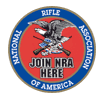
|

|
|
